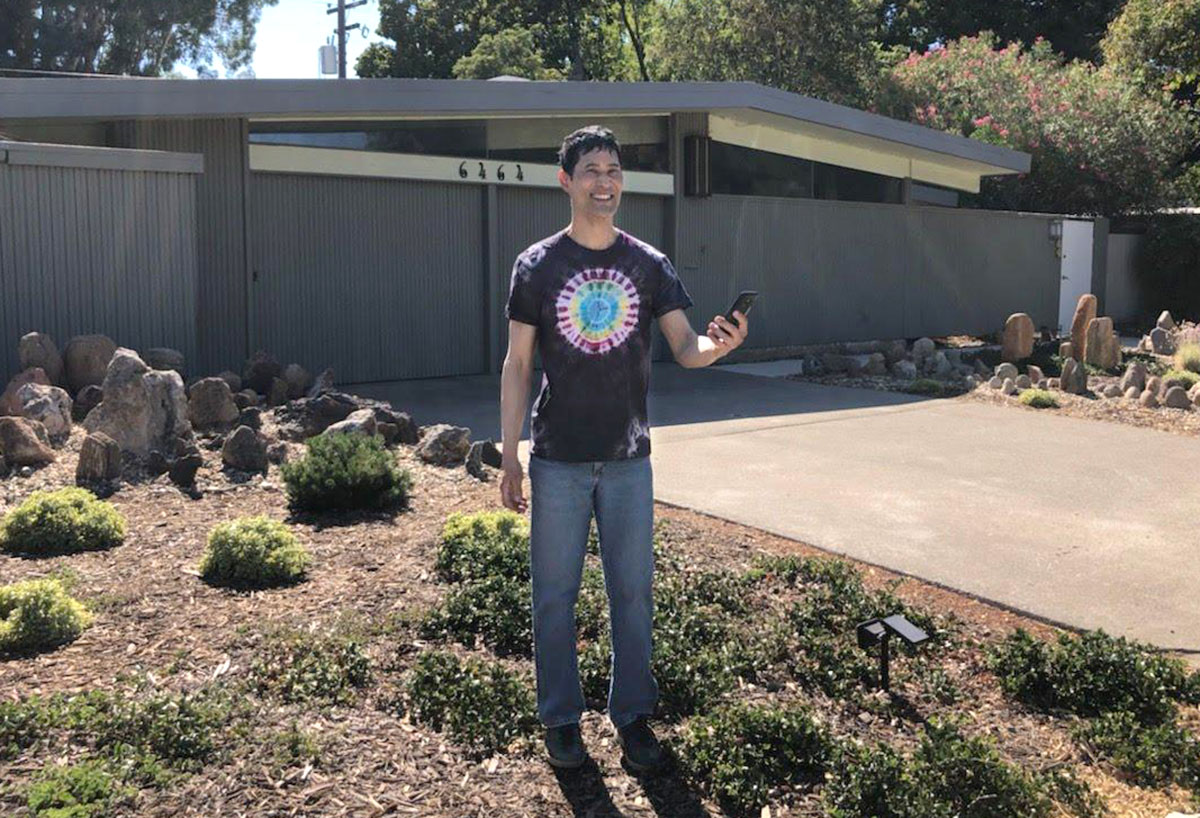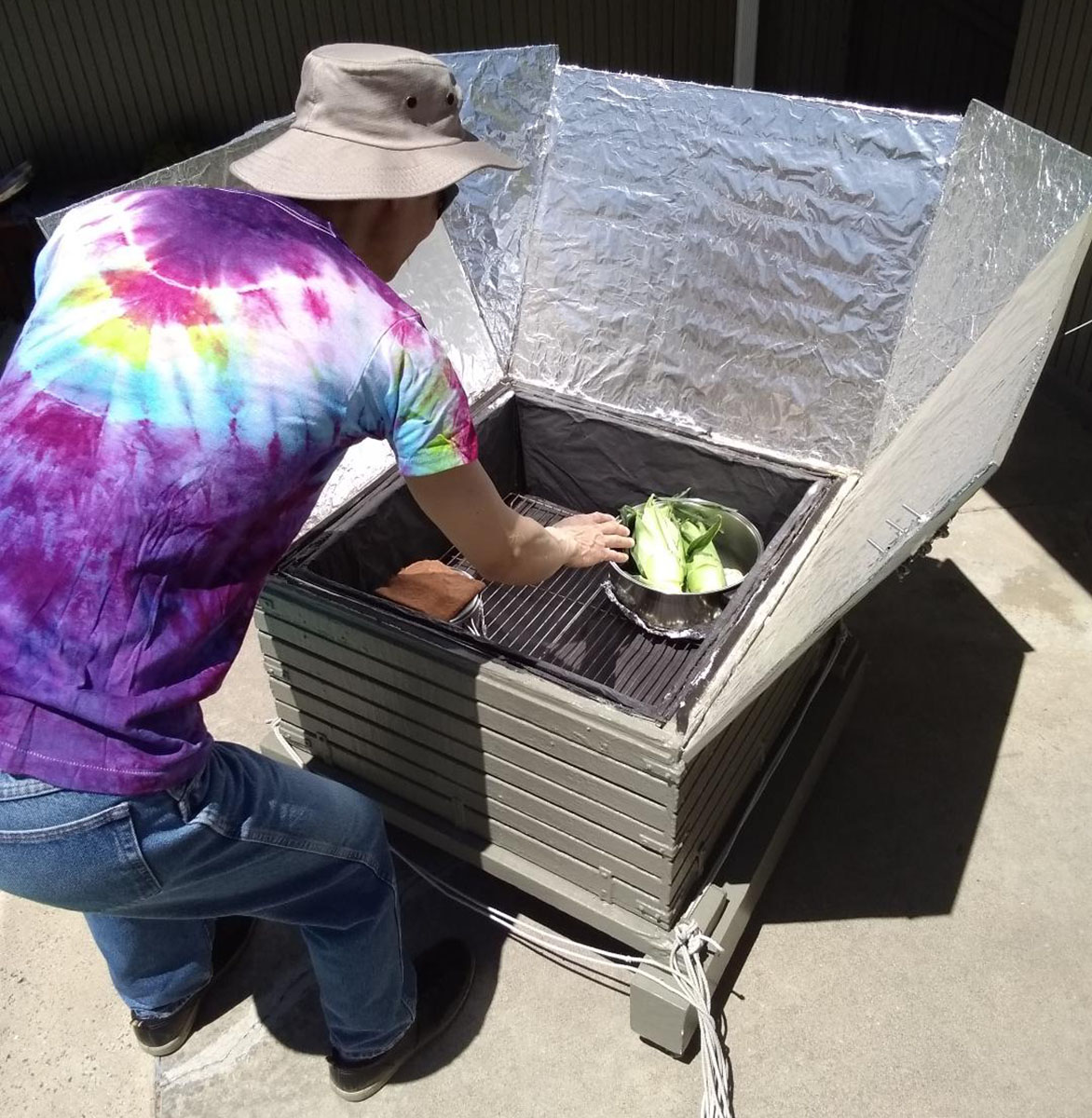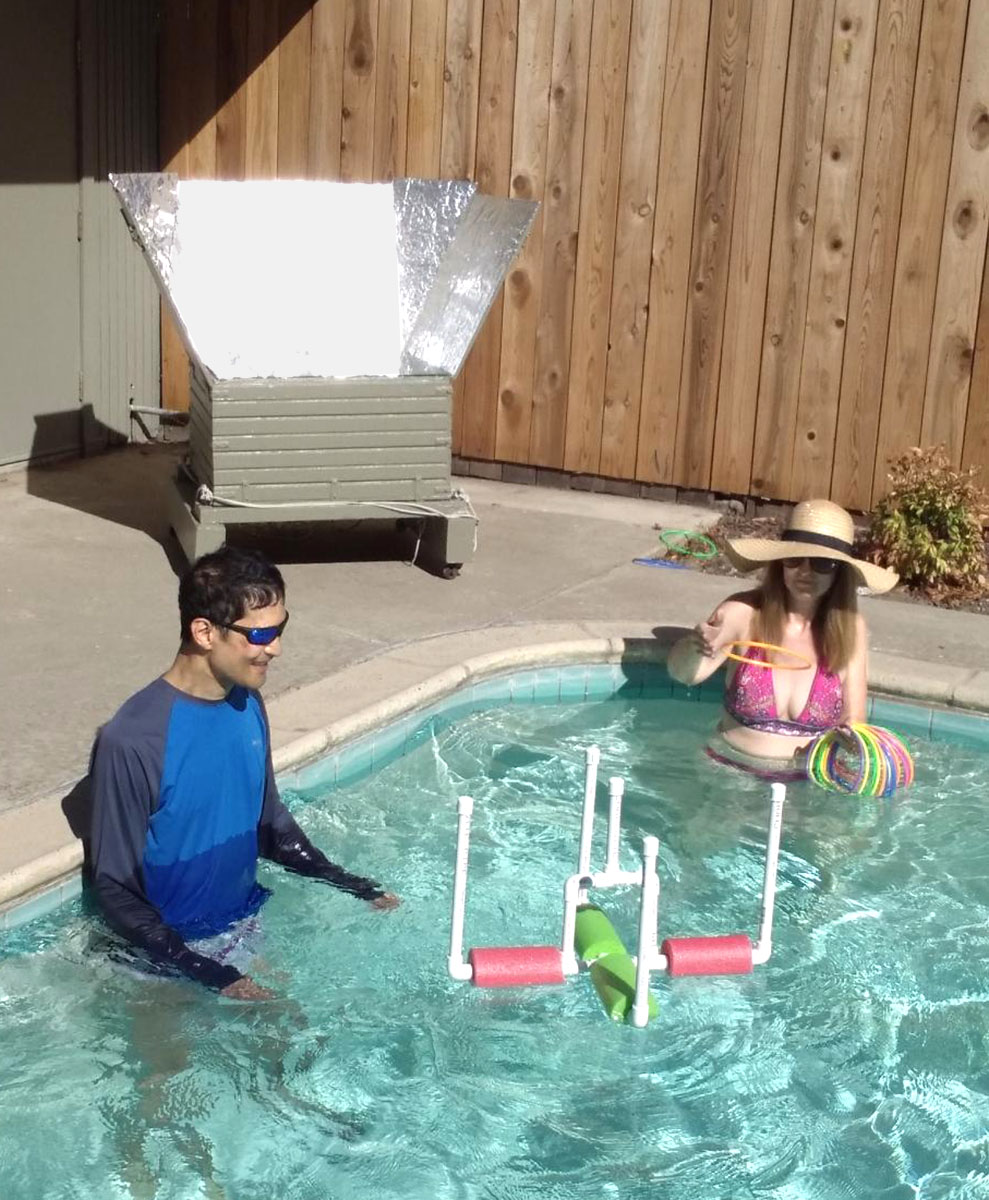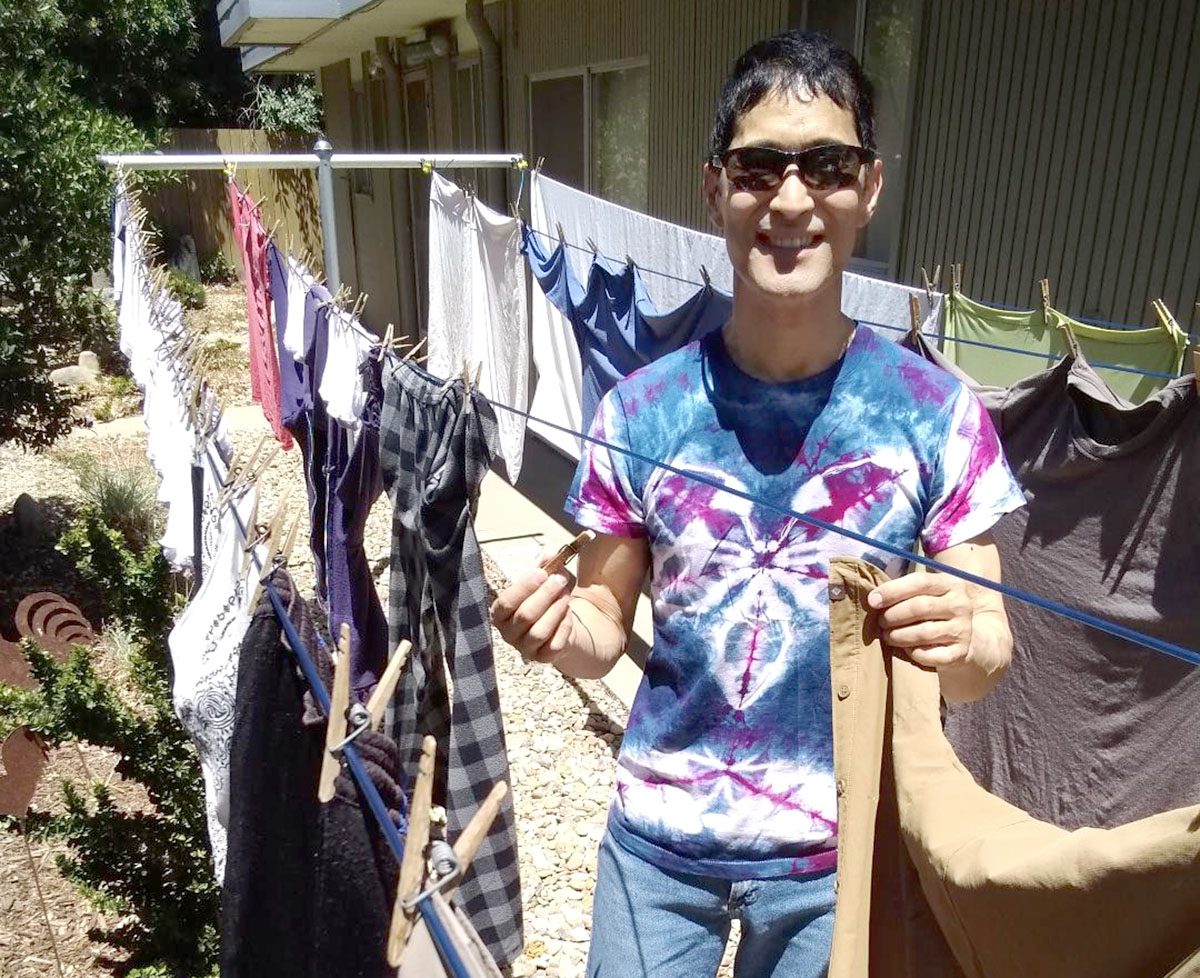
Sunshine Fuels an Eichler Solar Oven
 |
In Sacramento, summers can bake. So why not bake with them?
That’s the message from Akira Yamamoto, who uses his solar oven every day from May through September to prepare breakfast, lunch, and dinner.
“Summer isn't summer without solar cooking,” says Akira, who grew up in the Sacramento Eichler neighborhood of South Land Park and inherited the family home from his parents, who were original owners in Joe Eichler’s only Central Valley subdivision.
“Sunlight is free,” Akira says, “and not using the kitchen oven and stove means the house stays cool even when Sacramento temperatures soar into the triple digits.”
“I use it every day in the summer,” Akira says of the oven. “In the summer I barely use the kitchen stove at all.”
 |
“It really fits in well with Eichler homes,” he says of the oven, which he says is large enough to handle pool parties. He also constructed it of authentic Eichler siding to match his house.
“Eichler homes and solar ovens are a good marriage. I’m surprised more people don’t do it. It’s so easy and worry-free,” he says.
“You can make an oven out of cardboard boxes,” Akira says. “They can be made cheaply, or really durable.”
For a recent “solar date,” Akira’s friend Renee “brought a salad from her garden, homegrown tomatoes. There’s nothing like homegrown tomatoes! I cooked corn in the husk, and it was so delicious!” Both Renee and Akira are vegan.
The oven uses aluminum reflectors to concentrate the sunlight. A sheet of glass provides a roof to keep the heat in. The temperature hits 300 degrees Fahrenheit, “so it’s slow cooking, low temperature. You can make anything in a solar oven you can make in regular oven. People say when you cook meat, it is so tender.”
 |
“Because it cooks so slowly, things don’t burn. It’s a lazy man’s way of cooking,” he says.
It takes Akira three hours to bake a potato. Pinto beans take much longer. Cooking the solar way does take planning. “It’s kind of a fun hobby,” he says. The oven is on wheels so it can be moved to stay in the way of sun rays.
“If I go to work, I angle the oven so it will cook the meal in time for my dinner,” says Akira, who works for the state as a data researcher.
He cooks rolled oats ahead of time for his breakfast. “I sometimes put a pot of green tea in the solar oven, and it gets so hot in the oven that the water boils in about an hour or so,” he says.
“I have also made pies, cornbread, and sourdough bread in the solar oven,” he adds.
Can someone fry eggs?
“You have to compromise,” he says. You can boil an egg instead. “Frying will not work in a solar oven. But the oven cooks without grease, which is more healthful. The pros outweigh the cons.”
 |
“Solar cooking is something I learned from my mom when I was young,” he says. “When I was growing up, my parents and I would look forward to hot Sacramento summers to try new recipes for meals cooked by sunlight.”
“My mom was a typical stay-at-home mom, but she always dreamed of getting a college degree. After we were all grown she got her master’s degree. She was taking a class at Sac State about Futurism, and it gave a lot of the ideas of Buckminster Fuller. So my mom did a class project that involved making a solar oven. She put it together and brought into class some brownies she’d made in the oven. People loved them,” Akira says.
“That taught me about solar cooking in junior high.”
Akira is surprised that solar cooking remains a niche activity – though he notes that “Sacramento is ground zero for solar cooking,” serving as home base for Solar Cookers International, which promotes solar cooking worldwide.
Akira also uses the sun to dry laundry, and bikes to work to keep a low carbon footprint. “Sacramento is one of the sunniest cities in the world. The sun in Sacramento is so intense, it dries clothes really fast,” he says.
Like some kids who have grown up in Eichlers, Akira was not initially a fan.
“I had a love-hate relationship with Eichler homes when I was growing up. They were so different. They didn’t look like the houses my friends were living in, with small windows. I wanted my parents to have a house like my friends had.”
“I didn’t come to appreciate them until I was living in the Midwest and visited the Frank Lloyd Wright home [Taliesin] in Spring Green [Wisconsin]. They showed a movie about the legacy of Frank Lloyd Wright, and it talked about Eichler. It gave me a whole new understanding of what Eichler homes were about.”
- ‹ previous
- 550 of 677
- next ›



